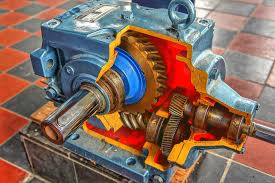Mobile:+86-311-808-126-83
Email:info@ydcastings.com
English
Design and Optimization of Single Suction Impeller for Enhanced Pump Performance and Efficiency
Understanding Single Suction Impellers Design, Functionality, and Applications
A single suction impeller is a crucial component in various pump systems, particularly in centrifugal pumps designed for transporting liquids. Understanding how these impellers work can provide significant insights into their efficiency, application, and importance in fluid dynamics.
Design and Structure
The design of a single suction impeller is relatively straightforward, yet it plays a pivotal role in the operation of centrifugal pumps. Typically, a single suction impeller consists of a hub, blades, and a shroud. The hub is the central part that connects the impeller to the shaft, transferring rotational motion. The blades, which can vary in number and shape, are designed to convert rotational energy into fluid kinetic energy, thus propelling the liquid. The shroud serves as a boundary that helps in maintaining the flow inside the impeller, ensuring that the liquid is effectively drawn into and expelled from the pump.
In a single suction configuration, liquid enters the impeller from one side, making it simpler compared to double suction impellers, where liquid enters from both sides. This design often leads to a more compact and lighter pump, which can be beneficial in various applications.
Functionality
The primary function of a single suction impeller is to generate a flow of liquid through a pump system. When the impeller spins, the blades push the liquid outward due to centrifugal force. As the liquid moves through the impeller, its velocity increases while its pressure decreases. The liquid then exits the pump through a volute or diffuser, where its kinetic energy is converted back into pressure energy, enabling the fluid to be transported through pipelines.
single suction impeller

One of the strengths of single suction impellers is their ability to handle relatively low flow rates and pressures. This makes them ideal for a range of applications, including water supply systems, irrigation, and industrial processes. However, they may have limitations when it comes to handling highly viscous fluids or systems requiring high flow rates.
Applications
Single suction impellers are widely used in various industries, including agriculture, water treatment, and manufacturing. In agricultural settings, they facilitate efficient irrigation by transporting water from reservoirs to fields. In water treatment facilities, these impellers are essential for moving water through filtration and purification processes, ensuring clean and safe water for consumption.
In the manufacturing sector, single suction impellers can be found in numerous applications, such as in cooling systems, where they help circulate water to maintain optimal operating temperatures for machinery. Their compact design also makes them suitable for applications with space constraints.
Advantages and Disadvantages
The advantages of single suction impellers include their simple design, cost-effectiveness, and ease of maintenance. They are often preferred for smaller pumps where the water flow requirements are moderate. However, some disadvantages come with their use, such as potential cavitation risks under certain conditions, which can lead to decreased efficiency and damage to the impeller over time.
In conclusion, single suction impellers are integral components in many fluid transport systems. Their effectiveness in converting mechanical energy into fluid movement, coupled with their wide range of applications, makes them a topic deserving of deeper understanding within the fields of engineering and fluid dynamics. Whether in agriculture, water treatment, or industrial manufacturing, the role of single suction impellers is undeniably significant, highlighting the importance of good design and material selection to enhance their performance and longevity. As technology advances, improving the efficiency and functionality of single suction impellers remains a crucial focus for engineers and designers alike.
-
Premium Fan Housing & Motor Casing for Optimal AirflowNewsAug.31,2025
-
High-Performance Automobile Water Pump & Electric SolutionsNewsAug.30,2025
-
Expert Stainless Steel Casting | Precision & Durable Metal PartsNewsAug.29,2025
-
Precision Metal Castings: Aluminum, Stainless Steel & Die CastingNewsAug.28,2025
-
Superior Aluminum Castings in Automotive Engine PartsNewsAug.22,2025
-
Common Materials Used in Fan Housing ManufacturingNewsAug.22,2025











